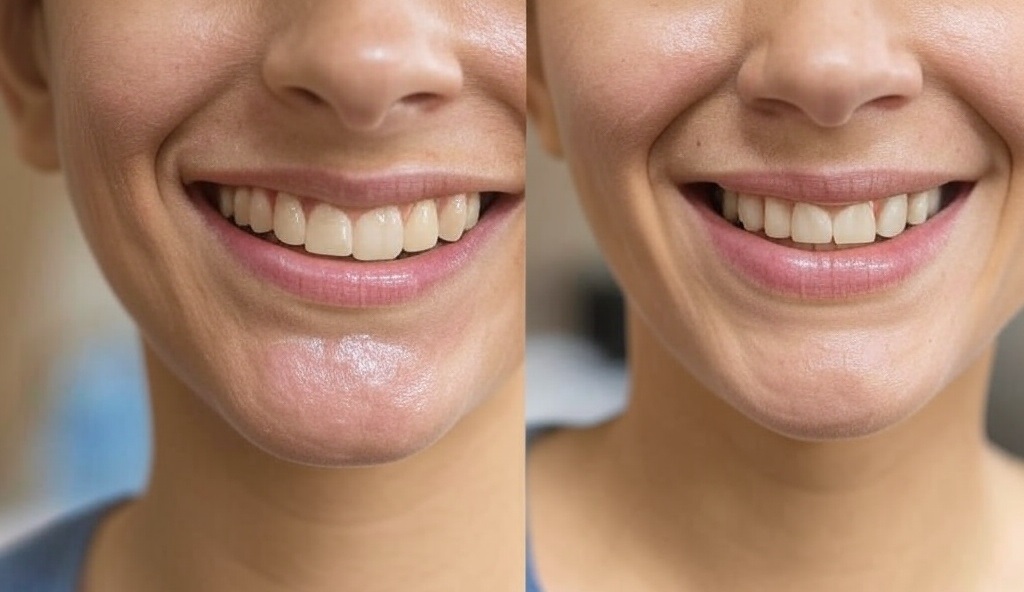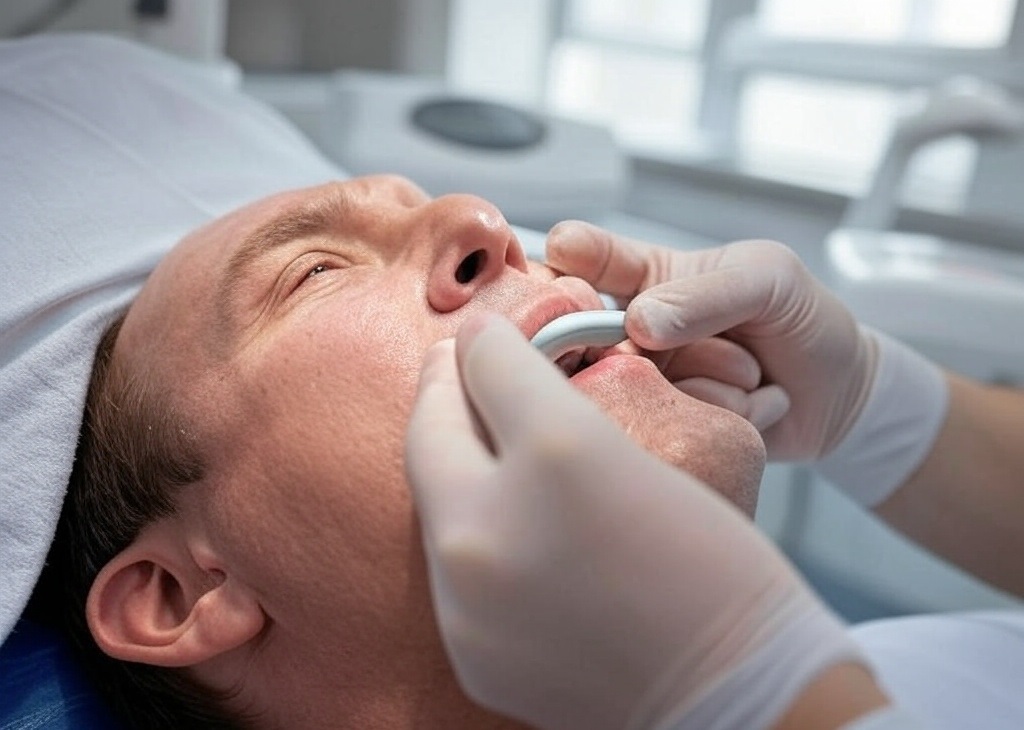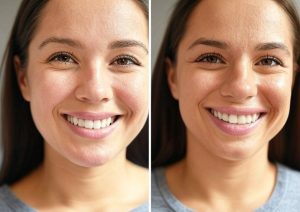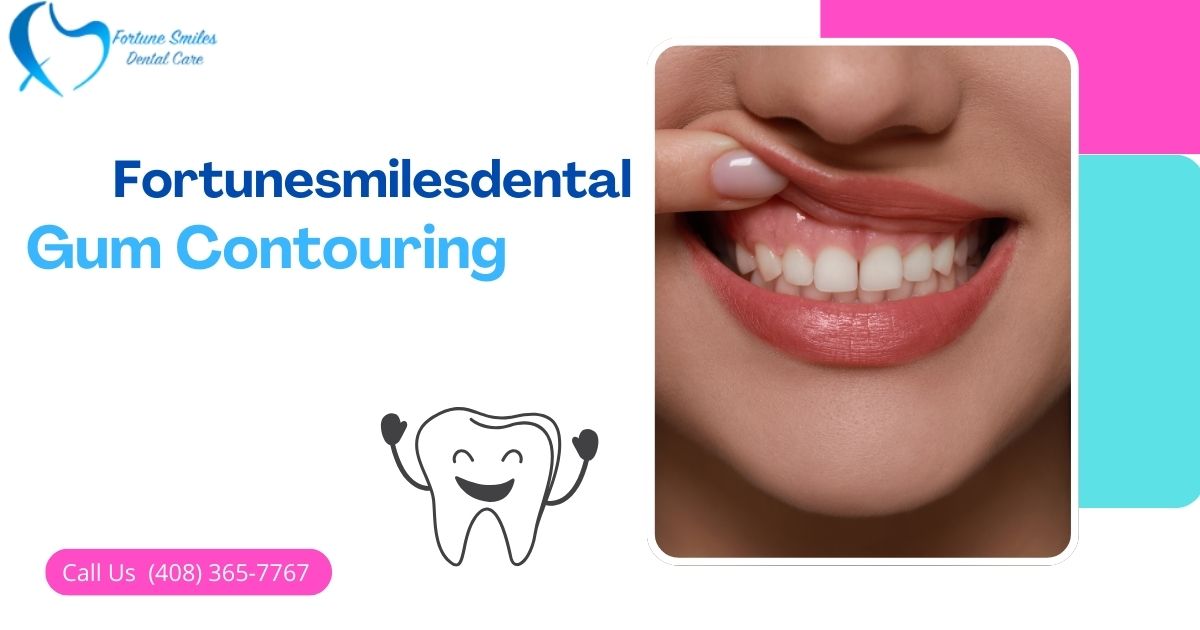Gum contouring is a specialized cosmetic dentistry procedure designed to reshape the gum line, enhancing the overall appearance of your smile. By carefully removing or adjusting excess gum tissue, this treatment reveals more of the teeth, creating a balanced and aesthetically pleasing look. It’s a transformative option for those seeking a smile makeover, offering both visual appeal and, in some cases, functional improvements.
For many, gum contouring addresses concerns like a “gummy smile,” where excessive gum tissue overshadows the teeth, or uneven gum lines that disrupt symmetry. It’s a popular choice within cosmetic dentistry because it’s relatively quick, minimally invasive with modern techniques, and can dramatically elevate confidence. Whether driven by aesthetics or subtle health benefits, this procedure is a cornerstone of personalized smile enhancement.
What is Gum Contouring?
Gum contouring, also known as gum reshaping or gingivectomy, involves the precise removal or sculpting of gum tissue to improve the smile’s proportions. Using tools like lasers or traditional scalpels, a dentist trims excess tissue to expose more of the tooth surface, crafting a harmonious gum-to-tooth ratio. The process is tailored to each patient, ensuring natural results complementing facial features.
While primarily a cosmetic procedure, gum contouring can also serve functional purposes. As an example, it may alleviate issues caused by overgrown gums that trap food or complicate oral hygiene, reducing the risk of gum disease. This dual benefit makes it a versatile solution within cosmetic dentistry, appealing to those seeking both beauty and practicality.

Who Is a Good Candidate for Gum Contouring?
Individuals with a “gummy smile”—where gums cover too much of the teeth, making them appear short—are prime candidates for gum contouring. Others may seek it for uneven gum lines that create an asymmetrical smile or excessive tissue growth due to genetics, medications, or conditions like gingival hyperplasia. These issues often prompt people to explore this procedure as part of a broader smile makeover.
However, not everyone is an ideal fit. Those with severe gum disease, thin gums prone to recession, or insufficient tooth enamel may need alternative treatments first. Consulting with the best cosmetic dentist near you is crucial to determine eligibility and ensure the procedure aligns with your oral health goals.
Common Reasons for Gum Contouring:
- Gummy Smile: Excess gum tissue hides teeth, disrupting proportions.
- Uneven Gum Lines: Irregular edges detract from smile symmetry.
- Genetic Overgrowth: Naturally thick gums require reshaping for balance.
How Gum Contouring Works: Procedure & Techniques
The gum contouring process begins with a consultation, followed by local anesthesia to ensure comfort. Depending on the technique, the dentist uses a laser or scalpel to carefully trim excess gum tissue, sculpting a smooth, even gum line. Recovery typically involves minor swelling or discomfort, which subsides within days, with full healing in about one to two weeks.

Laser Gum Contouring Vs Traditional Scalpel Methods
Laser gum contouring is increasingly popular due to its precision, minimal bleeding, and faster recovery compared to traditional scalpel methods. The laser cauterizes as it cuts, reducing infection risk, while surgical approaches may suit more extensive reshaping. Both methods, when performed by a skilled cosmetic dentist, deliver excellent results tailored to your smile.
Key Steps in the Procedure:
- Consultation: Assessing gum health and smile goals.
- Anesthesia: Numbing the area for a pain-free experience.
- Reshaping: Trimming and sculpting gums with chosen tools.
- Aftercare: Instructions for healing and maintaining results.
Gum Contouring and Smile Makeovers: Complementary Treatments
Gum contouring often pairs seamlessly with other cosmetic dentistry treatments to achieve a comprehensive smile makeover. For example, dental bonding can refine minor tooth imperfections after gum reshaping, while porcelain veneers offer a polished, uniform look by covering teeth with custom shells. These combinations amplify the procedure’s impact, creating a stunning transformation.
Cosmetic bonding is another ally, smoothing transitions between gums and teeth for a cohesive appearance. Imagine a patient with a gummy smile and slightly chipped teeth: gum contouring evens the gum line, veneers perfect the teeth, and bonding ensures a flawless finish—resulting in a confident, radiant smile that turns heads.
Popular Pairings:
- Dental Bonding: This fixes small chips or gaps post-contouring.
- Porcelain Veneers: enhance tooth size and color for harmony.
- Cosmetic Bonding: Blends gums and teeth naturally.
Costs and Recovery: What to Expect
The cost of gum contouring varies widely, typically ranging from $500 to $3,000, depending on factors like geographic location, the dentist’s expertise, and whether lasers or scalpels are used. A single tooth might cost less, while a full smile makeover involving multiple teeth and additional treatments like porcelain veneers naturally increases the price. Insurance rarely covers it unless deemed medically necessary.

Recovery is straightforward but requires diligence. Patients can expect mild soreness, managed with over-the-counter pain relievers, and should stick to soft foods for a few days while avoiding spicy or hot items. Brushing gently and following aftercare instructions from your cosmetic dentist ensure optimal healing and lasting results.
Recovery Tips:
- Pain Management: Use ibuprofen or prescribed medication as needed.
- Diet: Opt for yogurt, smoothies, and mashed potatoes initially.
- Hygiene: Rinse with saltwater to keep the area clean.
Finding the Best Cosmetic Dentist Near Me
Choosing the right professional is critical for successful gum contouring. Look for a dentist with specialized training in cosmetic dentistry, a strong portfolio of before-and-after photos, and glowing patient testimonials. Credentials like membership in the American Academy of Cosmetic Dentistry (AACD) signal expertise and commitment to excellence.
Start your search by asking for recommendations, browsing online reviews, or visiting practice websites to assess their focus on smile makeovers. Schedule consultations with a few candidates to discuss your goals, evaluate their approach, and ensure you feel confident in their hands. The best cosmetic dentist near you will blend skill with a personalized touch.
Factors to Consider:
- Experience: Years performing gum contouring and related procedures.
- Technology: Use of lasers or advanced tools for precision.
- Reputation: Positive feedback from past patients.
Conclusion
Gum contouring offers a powerful way to enhance your smile, addressing aesthetic flaws like a gummy smile or uneven gum lines with precision and care. Whether paired with dental bonding, porcelain veneers, or cosmetic bonding, it’s a gateway to a confident, radiant appearance that reflects your best self. The procedure’s blend of artistry and science makes it a standout in cosmetic dentistry.
If you’re considering this transformation, take the next step by consulting a qualified cosmetic dentist. Personalized advice will clarify how gum contouring can elevate your smile, ensuring results that are as functional as they are beautiful. Your perfect smile awaits—why not explore the possibilities today?

